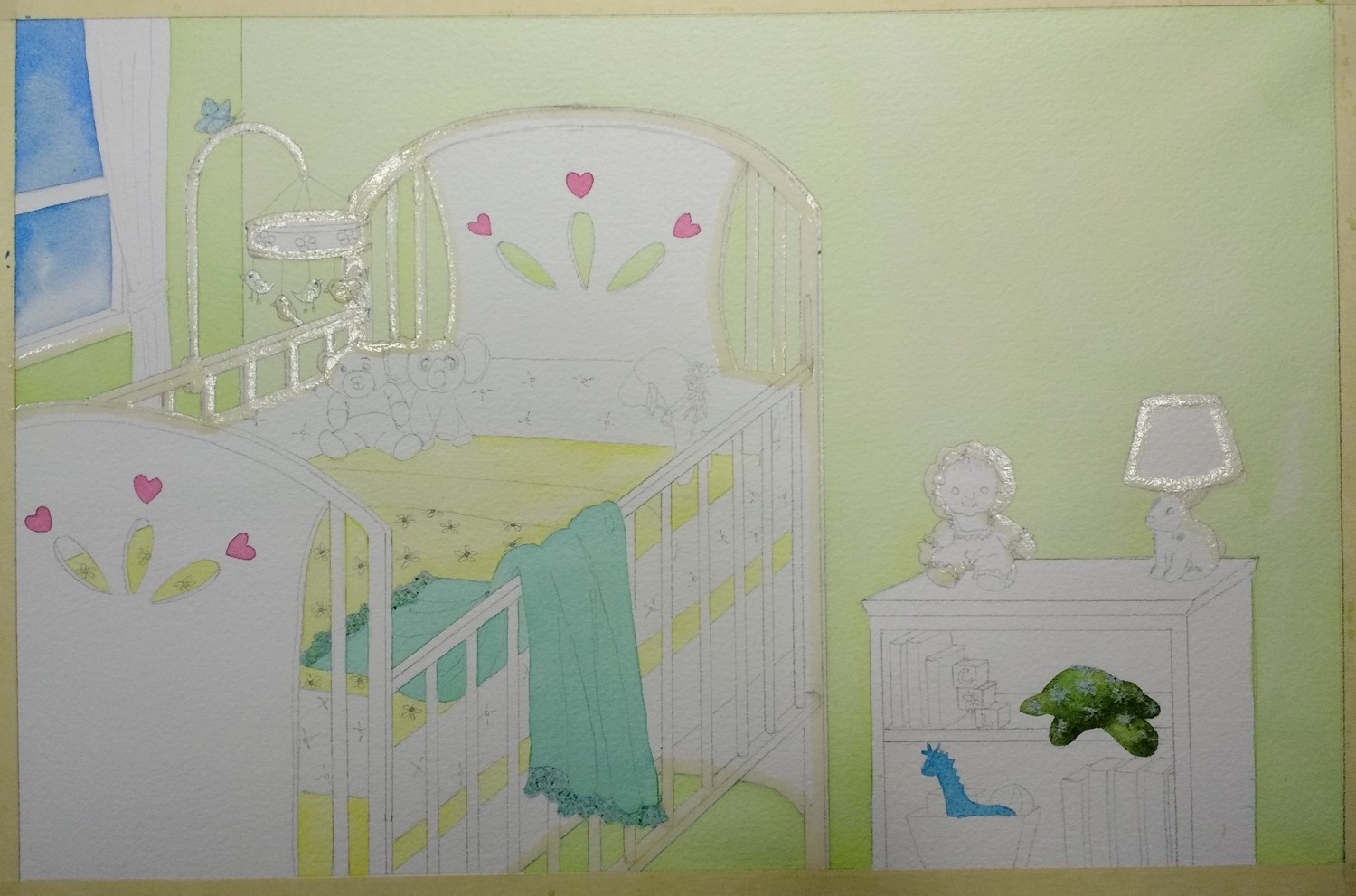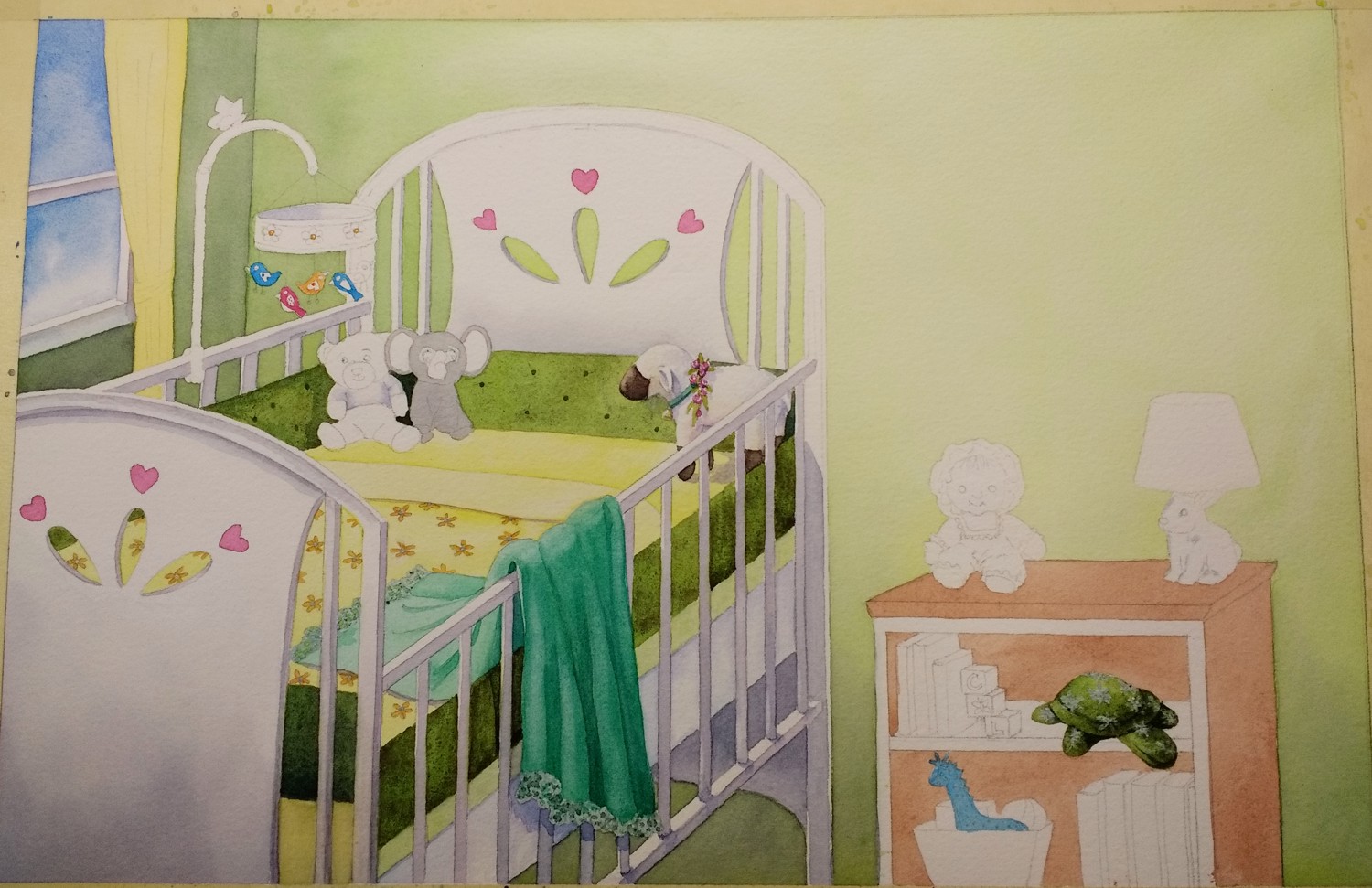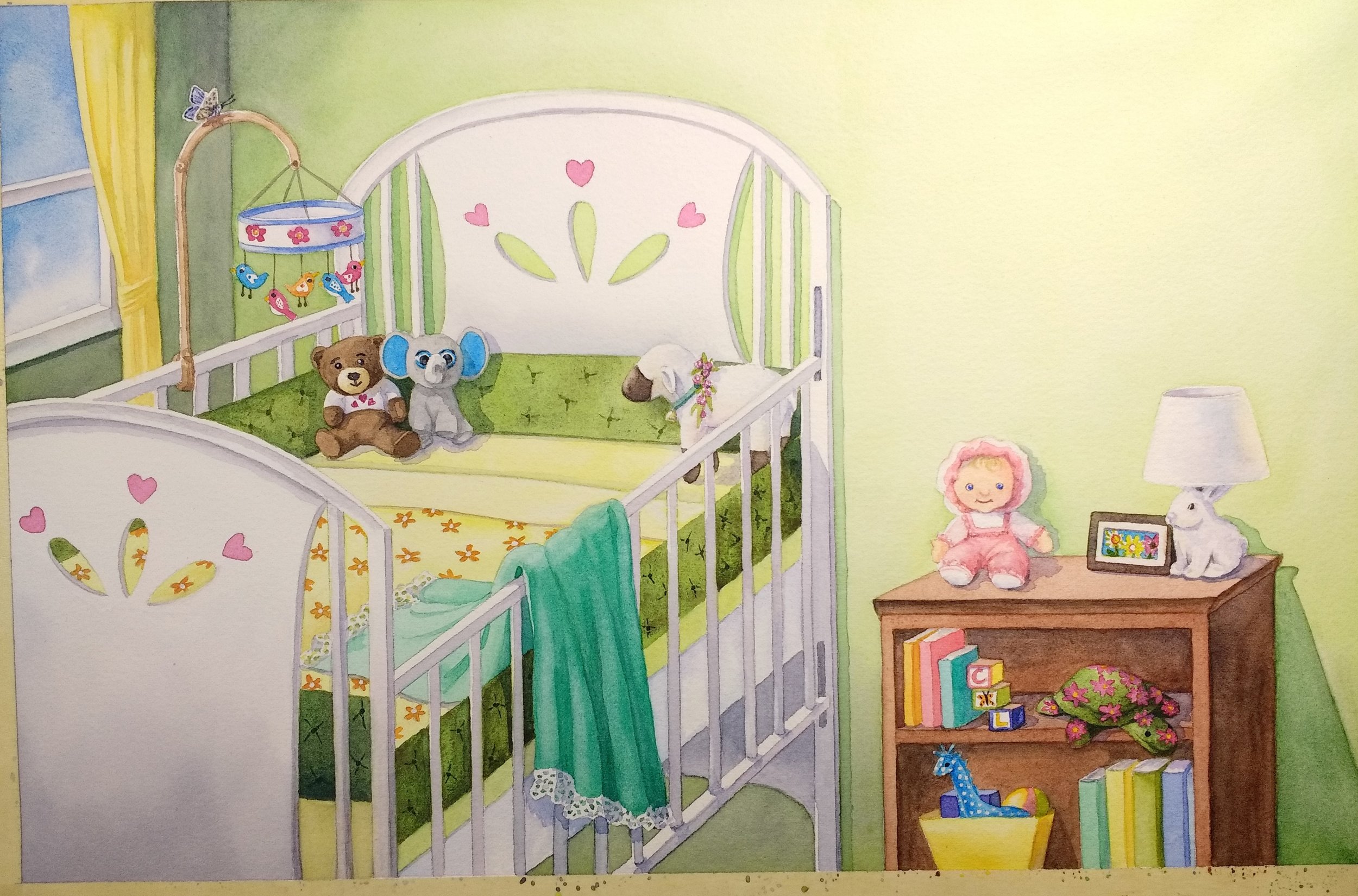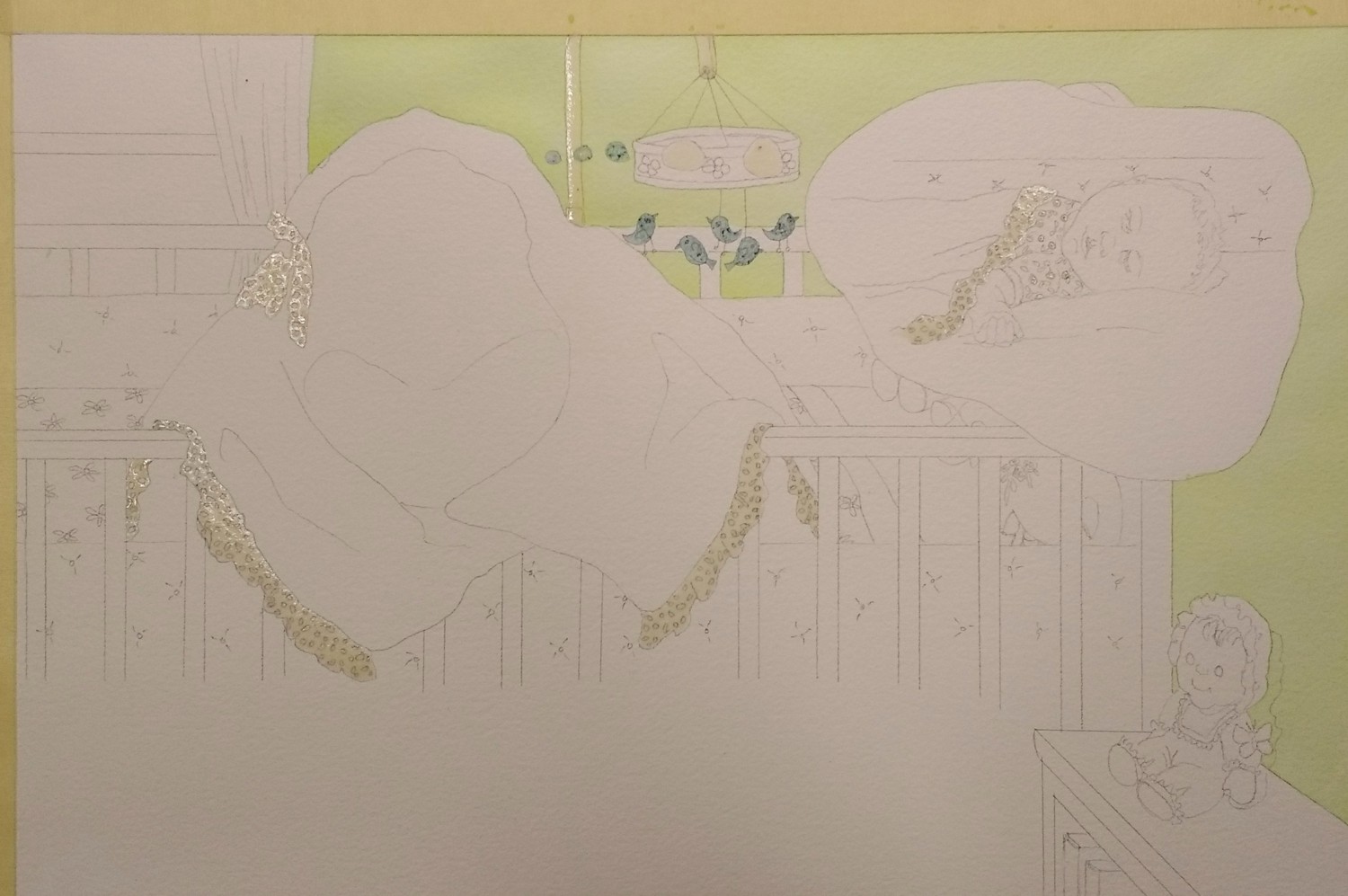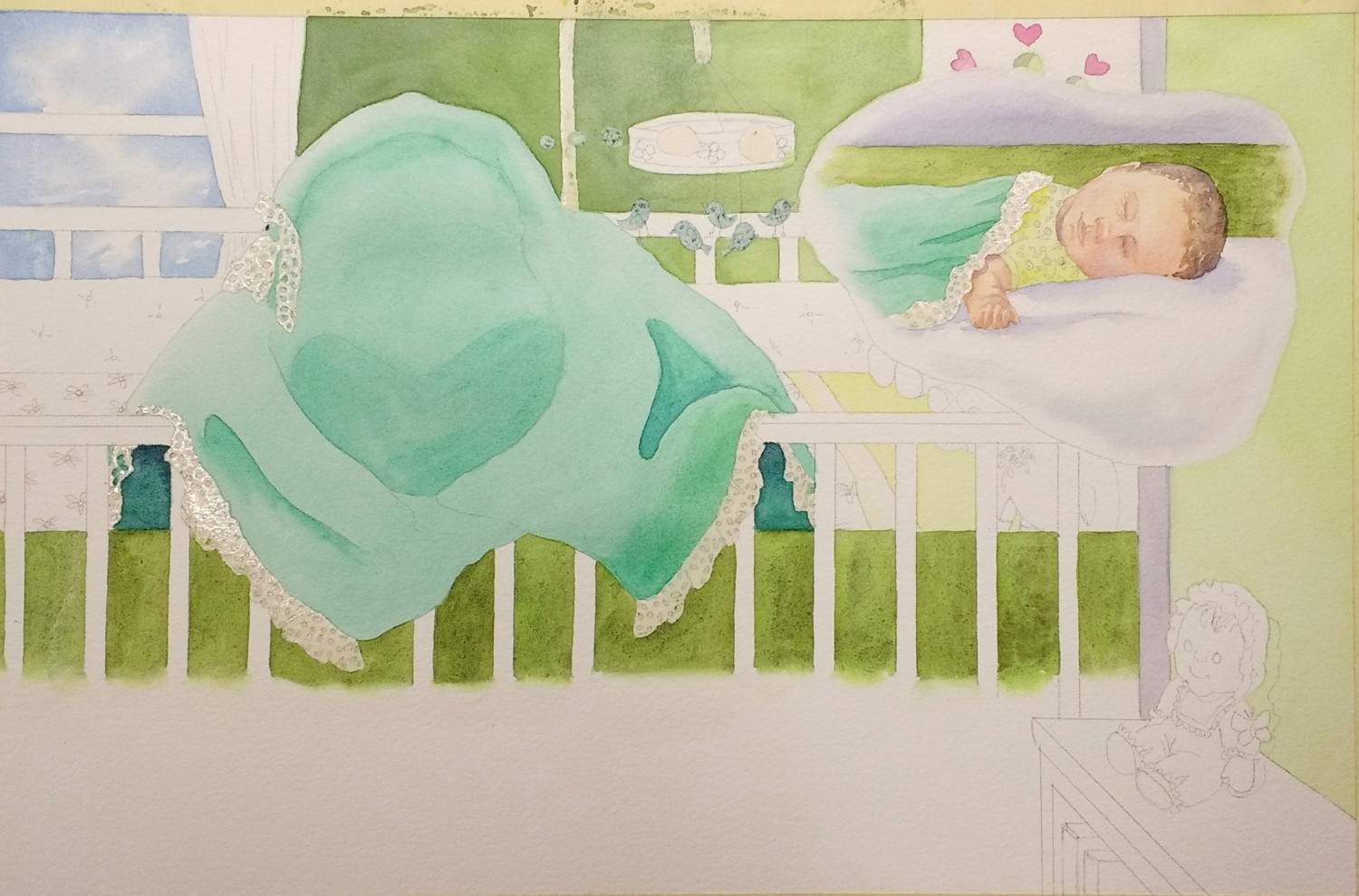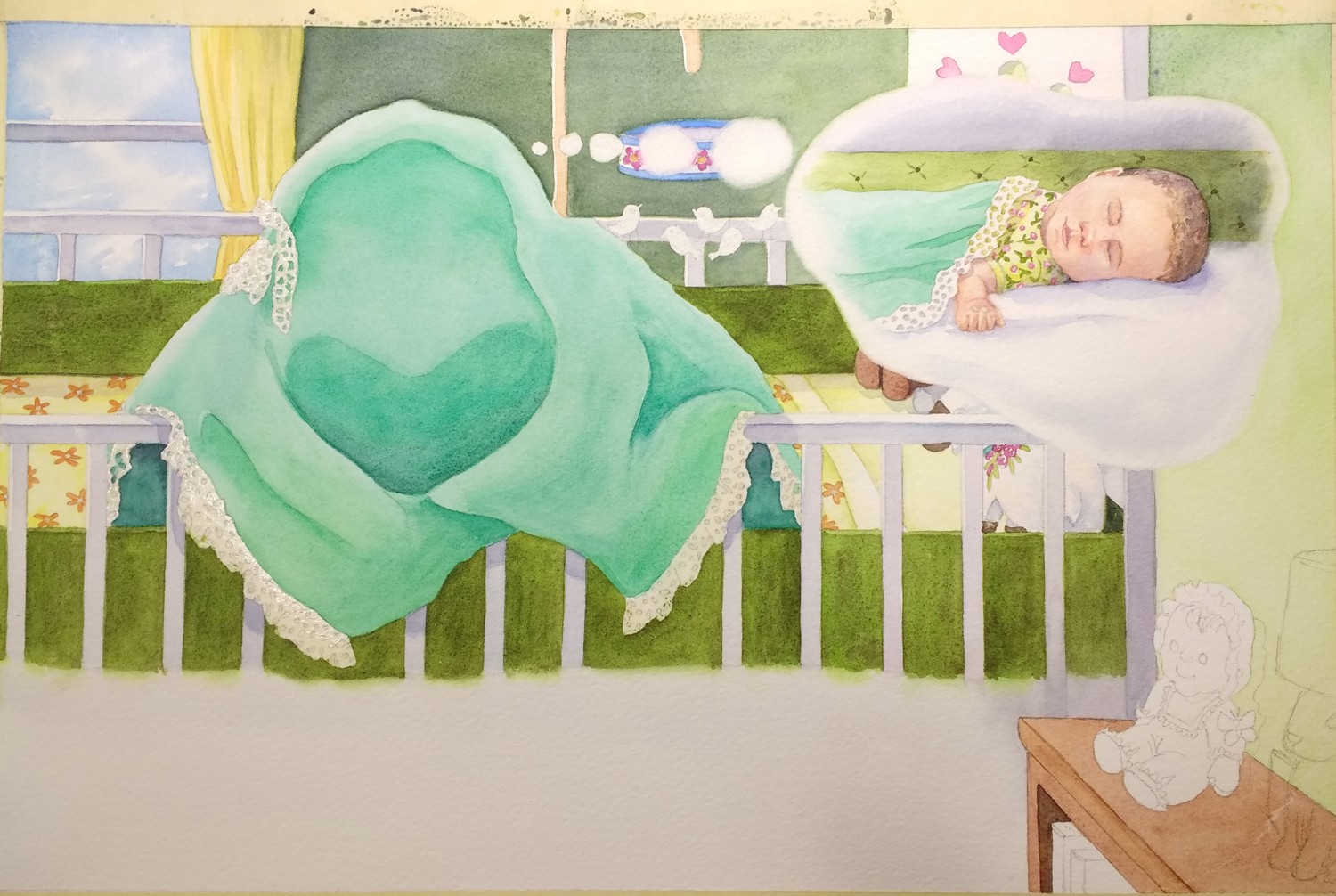This is the continuation of my posts to create 17 watercolor illustrations for the children’s book, “For I Am Yours” by Pauline Hawkins. My plan was to post about the process every Friday, but life got in the way! I have until the end of July to complete all 17 illustrations, so I have planned to get one or more done each week. Right now, I am ahead, but some of the coming illustrations will have more figures in them and I am anticipating these to take longer.
The images that I have completed are not in order. I have skipped around to the ones that I felt either wouldn’t take too long or that I felt the drawing was resolved and ready to go. The first two pages also helped me figure out the colors for almost everything because they will be repeated throughout the pages.
Here are the first two pages with the blanket waiting for the baby to arrive. Before applying paint, I masked some of the shapes with Winsor and Newton masking fluid. The shiny shapes in photo #1 is the masked areas. The masking will protect the white paper until I am ready to paint in those areas or I can leave them white.
Then I started painting the background walls. I used a mix of Aureolin (Cobalt) Yellow with Amazonite Genuine (a turquoise blue) and created a soft yellow green. Because I am making up these scenes, I am building them slowly so that I don’t go too dark. I found it easiest to paint in the objects that I was certain of their color and value and then move on to the objects with more value or color variations.
As I add objects, I keep adjusting the things around the room because I can better judge the value of everything. I ended up needing to increase the value of the walls and I gave them some shadows in the corners to make them less important and bring the focus to the middle of the image. In the final image, I have everything painted in and I have added shadows. .
As I was working on these pages, I took a break in the beginning and started adding some color to the second double page spread. It helped to get away from the first image to see it with fresh eyes and while one area dried on the first image, I often added the glazes to the second image.
Here are some images from the next pages:
Again, I started by painting in the color on the bedroom walls and the color on the blanket. In this scene the blanket has a little more character and is dreaming of the day the baby comes home.
I used some Winsor Newton and some Pebeo (blue) masking fluid to save some of the smaller parts of this illustration.
I then started painting the image of the baby in the ‘dream bubble’. I used a mix of a warm red (Pyrrol Scarlet) and yellow (New Gamboge), thinned with water to paint the base color on the skin and slowly added layers of color to form the face of the infant. I used lighter color and soft edges along the outside of the bubble to make it feel like a dream.
After looking at the scene some more, I decided to increase the size of the circles that lead to the thought bubble. Using some masking tape over the area, I cut out the larger shapes. I used a small piece of a ‘Mr. Clean Magic Eraser’ to scrub off the color and get those areas back to the white of the paper. If you use a ‘Mr. Clean’ make sure to use the kind that does not have soaps or chemicals because you don’t want to transfer these to the watercolor paper. Also, test your paper. The ‘Mr. Clean’ is abrasive and can tear some papers.
The final image here still has some areas that need adjusting or painting. I also decided to add the lamp in the lower right corner. I was able to use the same method listed above with the tape and ‘Mr. Clean’ to lift the paint and get back to the white surface of the paper.
I was pleased with the outcome of the first two, double page spreads, for the children’s book. I have already started work on several others and will continue to post more as I create them. Thanks for following along!

